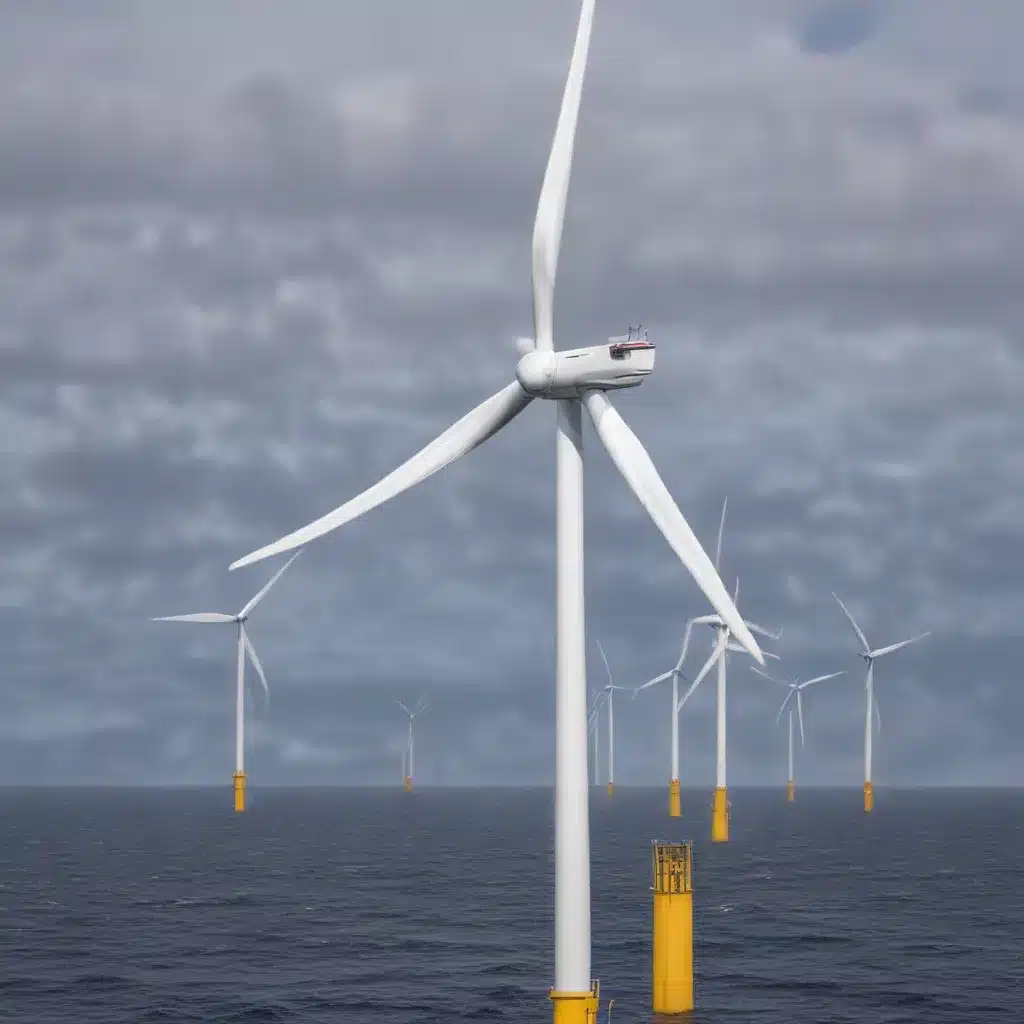
The race to decarbonize Europe’s energy system has put a renewed spotlight on the vast potential of offshore wind power. With over 2,000 gigawatts (GW) of untapped capacity in deep waters near coastal population centers, offshore wind stands poised to play a critical role in achieving the continent’s ambitious net-zero emissions goals. However, to harness this immense resource efficiently and affordably, the industry must overcome a range of technical, economic, and regulatory challenges.
Turbine Design Innovations
At the heart of the offshore wind revolution are the towering wind turbines themselves. Researchers at the U.S. Department of Energy’s National Renewable Energy Laboratory (NREL) are leading the charge in developing next-generation turbine designs optimized for the unique demands of the marine environment.
Blade Advancements
One area of focus is the turbine blades. By leveraging advanced materials and aerodynamic modeling, engineers are designing longer, lightweight blades that capture more wind energy while withstanding the rigors of offshore conditions, such as corrosion, fatigue, and extreme weather events. Novel blade geometries and smart control systems are also enhancing power output and grid integration capabilities.
Drivetrain Enhancements
The drivetrain—the gearbox, generator, and other core components that convert the blade’s rotational energy into electricity—is another key area of innovation. Researchers are exploring high-efficiency, direct-drive generators that eliminate the need for a gearbox, reducing maintenance costs and improving reliability. Advancements in superconducting materials and magnetic bearings are also paving the way for more compact, lightweight drivetrain designs.
Structural Improvements
The floating platforms that support offshore turbines must be engineered to withstand the harsh marine environment while minimizing levelized cost of energy (LCOE). NREL scientists are evaluating and optimizing innovative substructure concepts, such as spar buoys, semi-submersibles, and tension leg platforms, to find the right balance of stability, cost, and scalability.
Grid Integration Strategies
As offshore wind capacity rapidly expands, integrating these variable renewable energy sources into the power grid is crucial. Researchers are developing advanced grid integration solutions to ensure the seamless and efficient transmission of offshore-generated electricity.
Power Transmission Solutions
High-voltage direct current (HVDC) transmission lines are emerging as a preferred technology for transmitting large amounts of offshore wind power over long distances to onshore grid connections. These efficient, low-loss systems can deliver electricity from far-flung offshore wind farms to population centers, overcoming the limitations of traditional alternating current (AC) infrastructure.
Energy Storage Systems
Coupling offshore wind farms with energy storage technologies, such as utility-scale batteries and pumped-storage hydroelectricity, can help mitigate the intermittency of wind power and provide grid-balancing services. By smoothing out fluctuations in wind generation, these hybrid systems enhance the reliability and dispatchability of offshore wind, making it a more attractive option for grid operators.
Smart Grid Technologies
The integration of artificial intelligence, machine learning, and Internet of Things (IoT) devices into the power grid can also optimize the integration of offshore wind. Advanced forecasting algorithms, predictive maintenance, and automated control systems can improve the grid’s ability to accommodate variable renewable generation, reducing the need for costly grid reinforcement.
Environmental and Regulatory Considerations
As offshore wind projects expand, careful consideration of environmental impacts and regulatory frameworks is essential to ensure responsible development.
Ecological Impact Assessment
Thorough environmental impact assessments are critical to evaluating the effects of offshore wind farms on marine ecosystems, including migratory patterns of birds and marine life, seabed disturbance, and potential noise pollution. Researchers are developing advanced modeling and monitoring techniques to better understand and mitigate these impacts, ensuring that offshore wind can be deployed in an ecologically sustainable manner.
Policy and Regulatory Frameworks
Navigating the complex web of policies, regulations, and permitting processes across European nations is another key challenge. Harmonizing offshore wind regulations, streamlining approval processes, and providing clear, long-term policy signals can create a more favorable investment climate and accelerate the deployment of this crucial renewable energy technology.
Economic and Financial Aspects
Ultimately, the widespread adoption of offshore wind will depend on its ability to deliver cost-competitive, reliable electricity that can attract the necessary public and private investment.
Cost Optimization Measures
Researchers are exploring a range of strategies to drive down the levelized cost of energy (LCOE) for offshore wind, including the optimization of turbine and platform designs, improved manufacturing and installation techniques, and the standardization of components and processes. Leveraging economies of scale, advancing floating wind technology, and improving operations and maintenance practices are all critical to making offshore wind a commercially viable option.
Investment Opportunities
The growing demand for offshore wind, supported by ambitious policy targets and public-private partnerships, is creating a robust investment landscape. Power Purchase Agreements (PPAs), green bonds, and innovative project financing mechanisms are providing the necessary capital to fund the development of large-scale offshore wind farms across Europe.
Market Trends
As the offshore wind industry continues to mature, the emergence of new market players, the expansion of domestic supply chains, and the increasing competitiveness of this renewable energy source are all positive signs for its future growth. Maintaining a strong policy framework, fostering technological innovation, and encouraging cross-border collaboration will be key to realizing the full potential of Europe’s offshore wind resources.
The path to a decarbonized energy future is paved with the innovative solutions being developed by researchers and industry leaders working to optimize offshore wind energy. By addressing the technical, regulatory, and economic challenges head-on, the offshore wind sector can unlock a vast, clean energy resource that will be essential in driving Europe’s transition to a sustainable, net-zero emissions economy.







